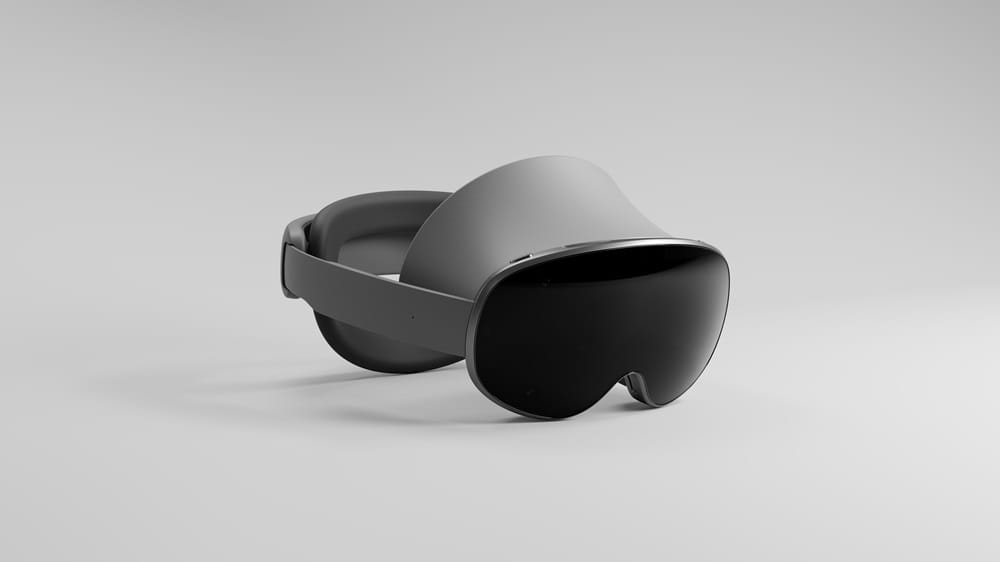Project Moohan: Google and Samsung's Entry into the XR Landscape
This article delves into the details of this innovative XR headset, exploring its features, capabilities, and its potential impact on the burgeoning XR market.

Introduction
The extended reality (XR) landscape is rapidly evolving, with major tech players vying for dominance. Among the most anticipated entrants is Project Moohan, a collaborative effort between Google, Samsung, and Qualcomm.
This article delves into the details of this innovative XR headset, exploring its features, capabilities, and its potential impact on the burgeoning XR market.
The Genesis of Project Moohan
Project Moohan was officially announced in December 2024, alongside Google's new Android XR operating system. This headset is poised to be the inaugural device to run Google's dedicated XR platform, signifying a strategic partnership between the software giant and Samsung, a leading hardware manufacturer.
The name "Moohan" itself is derived from the Korean word for "infinity," hinting at the boundless possibilities that the creators envision for this technology.
Design and Ergonomics
Initial hands-on impressions suggest that Project Moohan's design draws inspiration from existing high-end XR devices, particularly the Apple Vision Pro. However, it aims to improve upon the user experience with a focus on comfort and practicality. The headset is reported to be significantly lighter than its counterparts, primarily due to its construction from a combination of plastic and hard metals. This material choice contributes to better weight distribution, enhancing comfort during prolonged use.
Unlike some standalone headsets, Project Moohan is tethered to a portable power pack, which offers an estimated two to three hours of battery life depending on usage. While this tethering might suggest a more stationary use case, it also allows for greater processing power without the constraints of an on-board battery.
The design also incorporates a removable bottom gray portion under the lenses, offering users the flexibility to choose between full immersion and maintaining peripheral vision.
Under the Hood: Specifications and Performance
At the heart of Project Moohan lies the powerful Qualcomm Snapdragon XR2+ Gen 2 processor, a chip designed to handle the demanding computational requirements of advanced XR experiences.
While the exact resolution of the displays is yet to be officially confirmed, rumors suggest the use of Sony-sourced 4K micro-OLED panels, boasting an impressive resolution of 3,552 × 3,840 pixels, 1,000-nit brightness at 20% power, 96% DCI-P3 color gamut, and a refresh rate of 90 frames per second (FPS).
These specifications indicate a commitment to delivering a visually stunning and fluid user experience.
Further enhancing the visual fidelity are pancake lenses, which contribute to a more compact form factor and improved optical clarity. The headset also features automatic interpupillary distance (IPD) adjustment, ensuring optimal viewing comfort for a wide range of users. For intuitive interaction, Project Moohan supports both eye and hand-tracking, allowing for natural and precise control within the virtual environment. An optional magnetically-attached light shield provides further customization for immersive experiences, and the inclusion of support for VR motion controllers suggests a versatile platform for various applications.
The Android XR Experience: Powered by Gemini AI
Project Moohan's most significant differentiator is its reliance on Android XR, Google's new operating system built around the advanced Gemini AI model. This integration promises a highly intuitive and responsive user experience. Initial demos highlight a home grid of familiar Google apps, including Photos, Maps, and YouTube, which are notably absent from some competing platforms.
Navigation within Android XR is designed to be seamless, utilizing gestures such as pinches, dragging, and taps, reminiscent of interactions on other popular XR devices. A key advantage of the Gemini AI integration is its ability to process commands on-device, leading to faster and more responsive interactions compared to cloud-dependent AI assistants.
Users can leverage Gemini to manage their virtual workspace, including cleaning up screen layouts when multiple applications are open. The system also boasts AI-enhanced 2D videos that add 3D depth, further enriching the immersive content experience.
Market Positioning and Outlook
Project Moohan is clearly positioned as a direct competitor to high-end XR headsets like the Apple Vision Pro. While Samsung is expected to strategically price Project Moohan to undercut Apple's $3,500 offering, the exact pricing remains a significant unknown. The initial launch is anticipated to occur in South Korea, followed by a gradual global rollout, mirroring Apple's phased approach with the Vision Pro.
The headset's potential extends beyond entertainment, with discussions around its viability as a laptop display replacement or a powerful productivity tool. The success of Project Moohan will also depend on the availability of a robust ecosystem of optimized Android XR applications and its compatibility with Bluetooth keyboards and mice for work-related tasks.
Conclusion
Project Moohan represents a significant step forward in the evolution of extended reality. With its powerful hardware, intuitive Android XR operating system powered by Gemini AI, and a focus on user comfort, it has the potential to carve out a substantial share in the competitive XR market.
As the anticipated launch approaches later in 2025, the tech world eagerly awaits to see how this collaborative effort between Google, Samsung, and Qualcomm will redefine the future of immersive computing.

